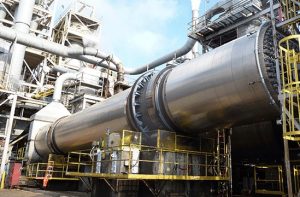WHY SUSTAINABILITY IS GOOD FOR YOUR BUSINESS.

Setting sustainability goals is becoming increasingly popular among many industries. One reason is companies are looking for ways to reduce emissions and reuse energy, water, and waste to grow their bottom lines. Another driving factor is the favorable borrowing terms on sustainability-linked loans (SLL). Billions of dollars are being deployed towards making sustainability a reality. Companies that lower the carbon footprint will attract new investors. The increase in capital comes from strong investor support to back companies with measurable sustainability goals.
Our Research
As we see more and more companies mapping out sustainability goals, we thought it would be valuable to present our research on some companies in our industry.
We’ve compiled a list of sustainability targets set by businesses across several industries.
Only a small percentage of S&P 500 companies have their goals publicly announced. We believe this will change and it’s only a matter of time when companies will be required to include a Scope 1 emissions report in their financial statements.
Download the .pdf of our research compiled by Sam Hugdahl.
Start with a Resource Assessment
Before setting any sustainability goals, you should conduct a resource assessment.
This will give you a clear understanding of any gaps in your production process and show your operational efficiency relative to your overall energy consumption. This assessment creates a roadmap of process improvements you can implement for quick wins in the short term.
Companies often get blinded by the need to develop sustainability goals or timelines and neglect to evaluate where they can improve the bottom line now. When you conduct a resource assessment, you have a solid baseline to work from as you head toward achieving your sustainability goals.
Conduct a Sustainability Audit
It is common for the executive team of many companies to commit to goals and secure sustainability-linked loans.
However, few of the corporations that have committed to reducing their carbon footprint have actual plans to reach their committed targets. Once these loans are issued, it falls to operations to develop and implement strategies that will deliver on the KPIs outlined in the terms of the stainability-linked loan.
This is the stage where companies typically turn to an engineering firm like ADF to run an audit and analysis. Our audit involves collecting process and utility data, identifying opportunity areas, developing cost analysis feasibility, and creating a master plan for implementation.
Energy or Water Pinch Analysis
An audit is followed by a pinch analysis. This technology has been around for decades and became extremely popular after the energy crisis of the 1970s. During this time, companies were looking for ways to save energy strictly from a cost-savings standpoint.
Pinch analysis was used heavily through the 1980s and then saw a swift decline as the cost of energy started going down, and gas became inexpensive in the United States. This trend stayed consistent through the 1990s and mid-2000s.
As the topic of sustainable energy started to gain more national and global attention, pinch analysis has made a comeback in the interest of carbon footprint and waste reduction.
How does pinch analysis work?
At a basic level, when running a pinch analysis, we are looking for waste heat or water sources and places to redirect it. The main goal of the analysis is to identify all sources of wasted energy and the syncs where they can be applied.
After identifying these opportunity areas, we determine the feasibility of using them in the reclaim/reuse process. We look at ways to drive the reclaimed energy back into the initial process or even direct it across different processes within the facility.
An example is capturing waste heat from a boiler stack and redirecting it to preheat air going to a dryer versus using gas to heat the dryer. The core of the audit is about finding potential based on your current process and developing ways to reclaim this energy. We avoid altering your process just for the sake of saving energy. Your process still needs to function as intended.
Lastly, we prioritize your opportunities based on calculating the capital cost of implementation and the rate of return. Once you have completed your energy audit, you’ll have a master plan of prioritized opportunities that you can consider for implementation.
Implementing Sustainability Goals
The master plan from our audit gives you the roadmap to start implementing your sustainability goals. Our advice is to start with the “quick wins,” things that can be put into place right away with relative ease. From there, it’s time to start thinking about three-year and five-year goals.
Using your master plan to build a long-term capital investment budget is key to taking advantage of the favorable debt on sustainability-linked loans. It’s important to remember that these projects do not have to be 100% sustainable or even brand new. Your projects just need to have components of sustainability, with measurable KPIs built into them to receive the benefit of these inexpensive borrowing solutions.
While energy or water costs have been relatively inexpensive in the United States, they are trending upward. Now is the perfect time to start developing your capital investment projects to achieve the sustainability targets. Once reductions are achieved your company will be ahead of the sustainability curve.
There is still time to gain momentum on your sustainability targets. Contact us today to get started with your sustainability plan.

